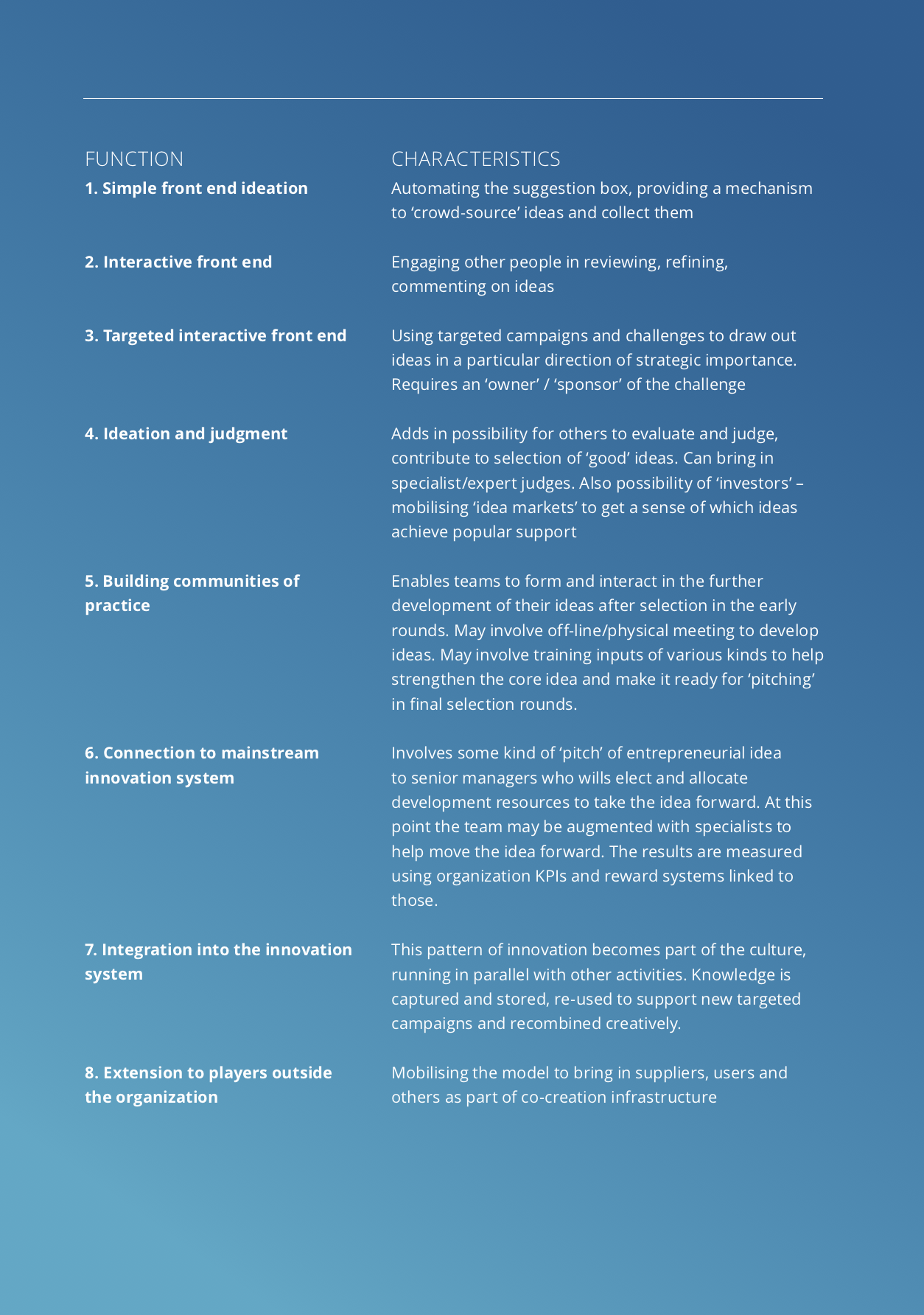Enabling high-involvement innovation
BUILDING THE HII INNOVATION ZONE
Innovation isn’t like the cartoons – that magic moment when a light bulb flashes above someone’s head. That’s an idea – but on its own, it’s not worth much. There’s a lot more to do if that idea is to create real value. And there are plenty of examples where innovation fails because we fail to recognise the other parts of the journey.
So if we’re going to put HII in place, we need to hook it up to a full innovation process – not just mobilizing another suggestion scheme but something which can enable the transit from ideas to value-creating reality. And this process – as figure 3 shows – has at least three key elements:
- Search/ideation – sourcing ideas
- Strategic selection – choosing which ideas to back
- Implementation – carrying ideas forward from 'gleam in the eye' to fully functioning and value-creating

Figure 3 : Simplified model of the innovation process.
We already know how to do this in quadrant 2 - the specialist tracks for ‘professionals’ in the innovation game such as R&D, production engineering, or new business development. And we have a similar, simpler model for continuous improvement. Here, it’s about many people going through short cycles of finding a problem, generating ideas to solve it, choosing one, implementing, reviewing, and repeating.
So what about the high-involvement innovation zone – how can we build a model for these three phases there? It’s clear that we need a systematic approach – not just a cosmetic one-off; otherwise, we risk not being taken seriously. And we need to replicate the whole innovation process – not just the front-end ideation. How can we do that?
THE EMERGENCE OF ONLINE COLLABORATION PLATFORMS
One option is to make use of online collaboration platforms. Their history goes back to the early days of automating the suggestion box. Essentially, these platforms made it possible for many people to submit ideas and get acknowledgment and feedback on the status of their ideas.
These platforms worked fine as a way of enabling the fast collection of ideas. But the real benefits began to emerge when they could help with the idea management process – choosing and developing ideas and keeping people updated on progress.
Innovation management software of this kind has matured rapidly. Typically today’s platforms offer support for:
- Finding ideas
- Selecting ideas
- Implementing ideas
- Targeting ideation
- Knowledge management
THE EVOLUTION OF PLATFORMS
The chance to work at scale, the embedding of a rigorous ideation process, and knowledge management offer a powerful boost to the idea of high-involvement innovation. There’s an evolutionary aspect to how platforms have developed, moving (as the table shows) from simple support for ideation to creating a powerful innovation infrastructure within and even beyond the organization.
Click the table to learn more about the features of an established innovation platform.
SOFTWARE IS JUST SOFTWARE – IT'S CULTURE THAT COUNTS!
But platforms alone won’t deliver effective and sustainable high-involvement innovation. Experience suggests that getting the best out of these powerful tools doesn’t happen by accident – it’s a learning process in which capability is gradually built and embedded. It’s not a case of automating innovation but rather of learning to use tools more precisely. And above all, it underlines the need to keep people in the equation.
Just like the long-term challenge of engaging staff in widespread improvement initiatives like lean or total quality, the proof of the pudding lies in the way in which people change their behavior. It’s an old chestnut, but the secret to successful HII is going to be a change in culture.


